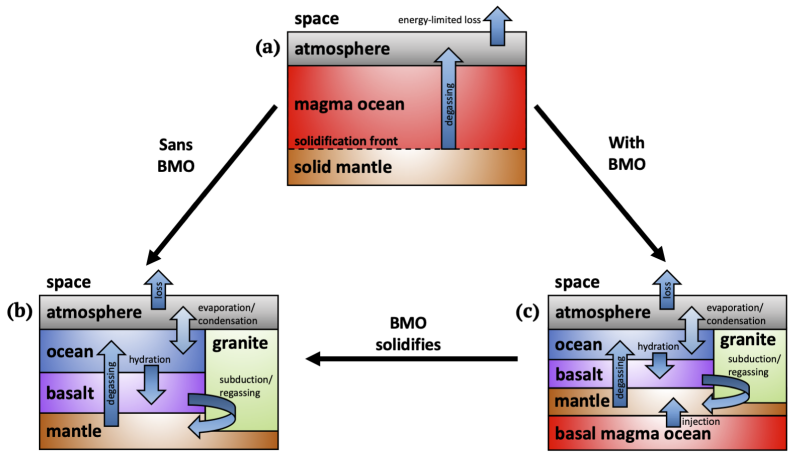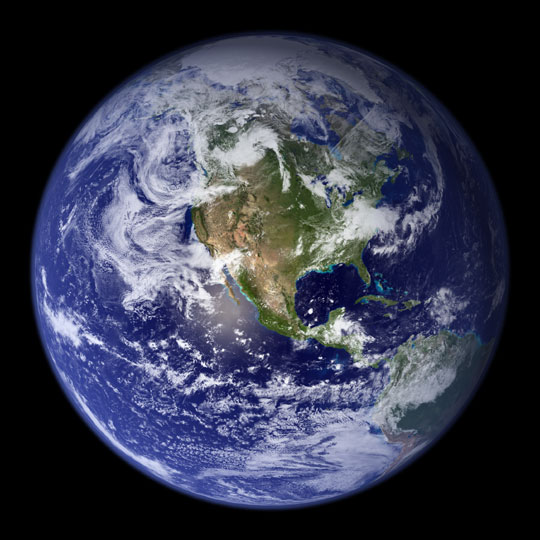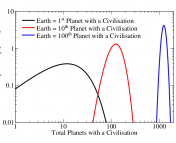Title: The Role of Magma Oceans in Maintaining Surface Water on Rocky Planets Orbiting M-Dwarfs
Authors: Keavin Moore, Nicolas B. Cowan, Charles-Edouard Boukare
First Author’s Institution: Department of Earth & Planetary Sciences, McGill University, 3450 rue University, Montreal, QC, Canada
Status: Submitted to MNRAS [closed access]
When it comes to life, its necessities, and its signatures, astronomers have one definite example: Earth. It follows that we would search for Earth-like planets when looking for habitable planets and signs of extraterrestrial life. The authors of today’s paper are motivated by this interest in Earth doppelgangers, specifically “M-Earths” – Earth-like planets within the habitable zones of the most common star type in the galaxy, M dwarfs. Because they are in the habitable zone, these planets should be able to host liquid water. Today’s paper tests whether or not this is true, which has significant implications for the search for life.
Why wouldn’t a planet hold onto its water? Despite being in the habitable zone, these M-Earths are significantly warmed by their host stars during their chaotic and energetic youth. This warming leads to very high surface temperatures that vaporize the liquid water present. If the planet reaches or overcomes a critical temperature, its oceans will completely evaporate, creating a blanket of water vapor that forces the planet’s surface to grow warmer and warmer. This is called the “runaway greenhouse” phase. During this phase, water is lost in bulk from the upper parts of the atmosphere. Depending on the planet’s distance from its host star and how much water it has to start, this phase may transition into a slower water loss phase or it may last until all the water is lost.
However, not all hope is lost! Today’s authors come to the rescue, testing whether the presence of magma oceans on these Earth-like planets helps or hurts their water retention. You may be asking, what is a magma ocean? That doesn’t sound habitable in the slightest. You’d be right! Astronomers use “magma ocean” and “lava planet” to refer to the very hot molten period of a young rocky planet just after its formation. The theory is that, fingers-crossed, these planets would eventually cool down and form a solid outer crust, like Earth.
Why would these magma oceans matter when thinking about our water loss problem? Turns out, a magma ocean can sequester some water, protecting it from the loss processes that affect the water at the surface and in the atmosphere. I know, that’s so cool! (Except not literally) After the magma ocean cools into a solid surface, water can be cycled between the surface and the molten mantle, if present (called the “deep-water cycle,” a significant process here on Earth).
The authors modeled several theoretical planetary systems spanning initial amounts of water and warming, as well as the maximum amount of water a mantle can store. They evolved these systems through their runaway greenhouse phases, water storage and cycling throughout their magma oceans, and eventual solidification of the planets’ surfaces (Figures 1 and 2). Afterwards, the authors were left with how much water was lost by each planet.


The authors found that planets need more than 2 Earth oceans at formation in order to survive complete desiccation (all water lost). The more initial water a planet has, the better its chances of retaining some despite the loss processes. If the amount of water initially stored and protected by the mantle was too low, more water was left helpless in the atmosphere and eventually lost to space. Overall, the authors have one captivating conclusion: magma oceans and deep-water cycling allow for eventual habitable (aka, water-having) conditions in most scenarios. Hip hip hooray! The next step for this team will be to test more complex water loss processes. The authors also call on observational astronomers to search for the water vapor loss around young Earth-like planets as confirmation of their model.
Astrobite edited by Yoni Brande.
Featured image credit: NASA/JPL-Caltech.




